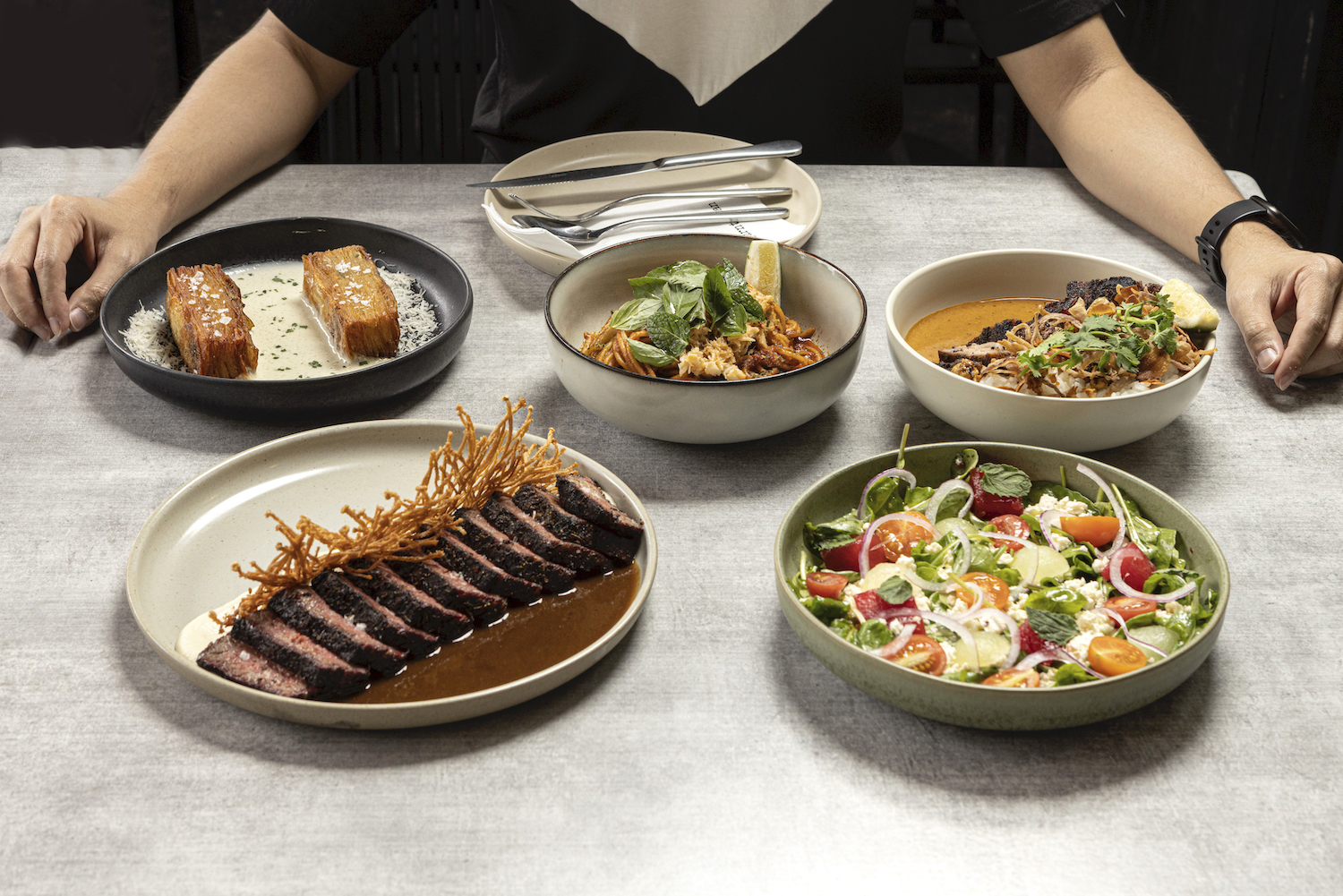Makati denizens will fondly remember the smokehouse Holy Smokes, nestled in the heart of everyone’s favorite hangout, Poblacion.
Back when I was still with Scout, we covered it when it was brand new in the mid-2010s when we were documenting the rise of the neighborhood as a watering hole for the youth. I remember being instantly smitten by its tender barbecued meats, as the crew told us of how much they studied the art of smoking and slow cooking. It was my first time to experience something like that, and at first taste it was clear they knew what they were doing.
That’s why I felt a tinge of sadness when they announced they were shuttering (albeit temporarily) Holy Smokes to shift their focus to something different. Even though I hadn’t dined there in a long time, especially because of the pandemic, I felt some connection to it because we vouched for the restaurant and put it on our pages. And even if you don’t frequent it, you always like to have the option when the hankering arises. If anything, it’s a lesson that you should always support the places you love by regularly eating there.
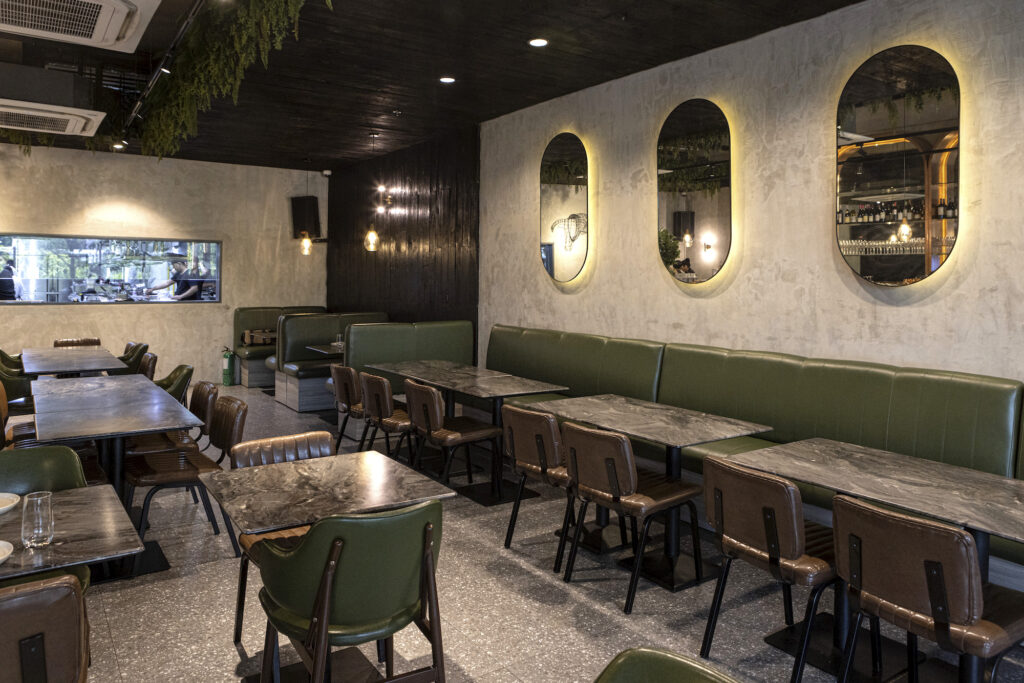
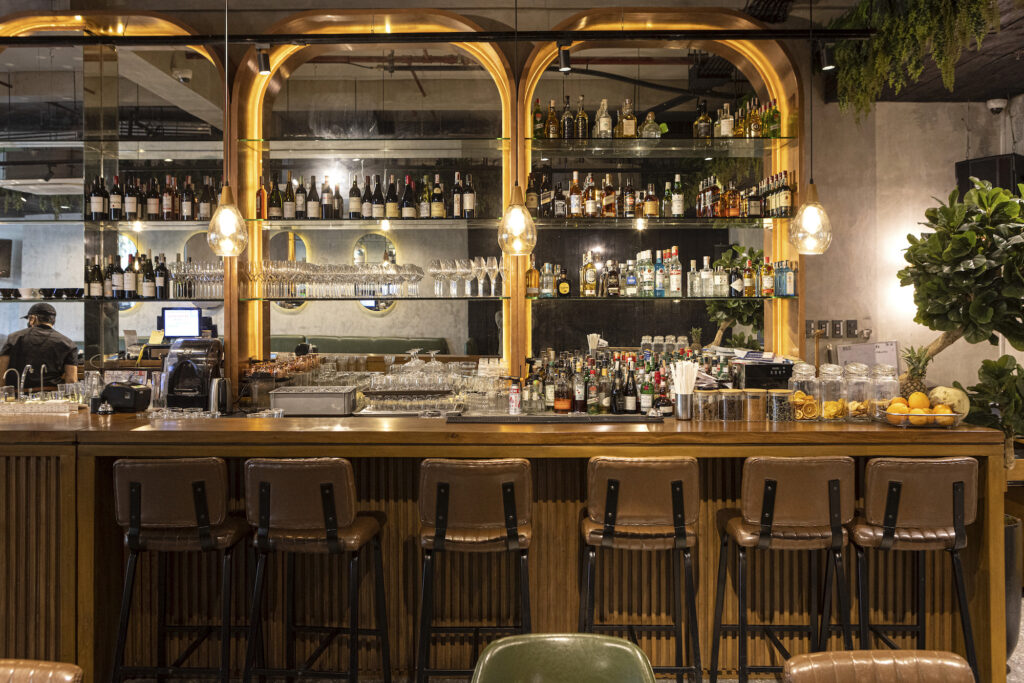
In its place (albeit in a new location) is a concept straight from the people behind Holy Smokes—Burnt Bean, a cafe and bistro located on Bonifacio Global City’s popular high street. Partners Juano Gutierrez and Maisa Acosta established the new place alongside chef Joseph Galvez just last December, and since then Holy Smokes has been parked as new management prepares to move it to Parañaque.
While the new restaurant is described as a spin-off, the trappings are wildly different: where Holy Smokes was casual and homey, sort of like having a barbecue party at a friend’s house, Burnt Bean is upscale and elevated, closely bordering on fine dining. If that sounds weird, especially to fans of the original, I’m happy to report that though it’s not the same, the menu still possesses the spirit of Holy Smokes.
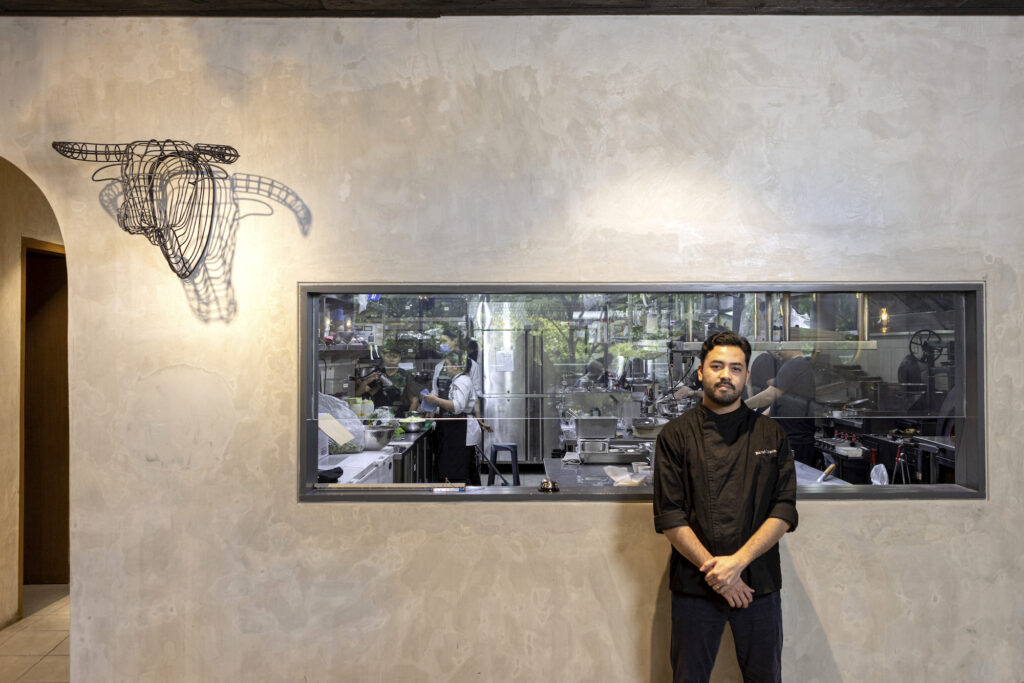
“I would consider it an evolution,” says Acosta. “We found that meat prices had doubled since we started with the smoke—and the quality of meats we’d been getting were becoming more inconsistent. The demand for it was also slowing down because it was expensive. It’s not sustainable. We had to evolve and pivot into a menu that’s more friendly, something you can eat regularly.”
“What we thought of differently was infusing the Holy Smokes influence in the bistro, all-day dining concept—everything being cooked on a wood-fired grill,” says Gutierrez. “That led to Burnt Bean, and the reason why it’s called ‘Burnt Bean.” The “bean” part of the name actually refers to the coffee that the restaurant also has.
“We made it more diverse”
Burnt Bean doesn’t only feature cuts of pork and beef—though the crowning glory of the original, the smoked and woodfired cuts, occupies a prominent place on the menu—but also other proteins as well, including lamb, salmon, and other fish, just to name a few.
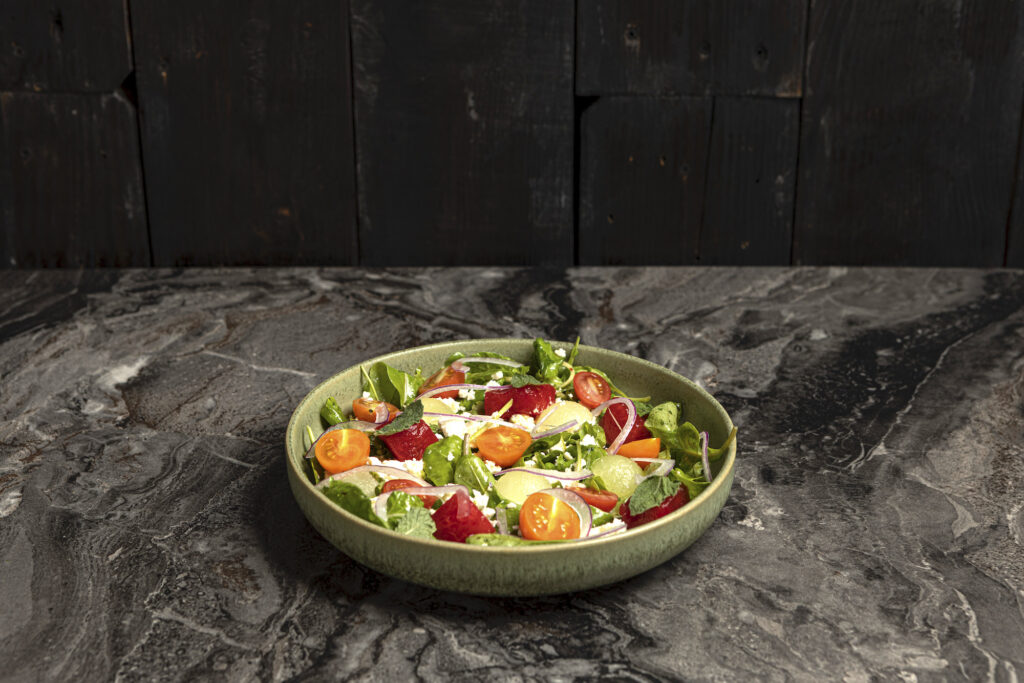

“When we collaborate, we just throw ideas to each other about certain cuts of meat,” explains Galvez. “Most of the time about cuts of meat and then the component of the dish. Then it moves to ‘okay, how do we cook it?’ Then how do we impart the smoke or the concept of the dish? It always starts with either an ingredient or a quarter of meat.”
This has resulted in creations such as their take on beef rendang curry, which takes the traditional Malay dish and its established flavors, and puts in the signature smoked and woodfired meat. Holy Smokes fans will immediately remember the distinct taste and soft texture of the cuts they’ve used before—that was enough to get my seal of approval.
Elsewhere, Galvez flexes with stylized protein plates that seduce a range of palates. The 48-hour beef ribs portrays the evolution of the restaurant. Playing off the idea of the meat as the star, Galvez delivers a level of marine-like beauty with the fried enoki jutting out of the center like corals as the meat is juxtaposed with the beef bone sauce and cauliflower puree.
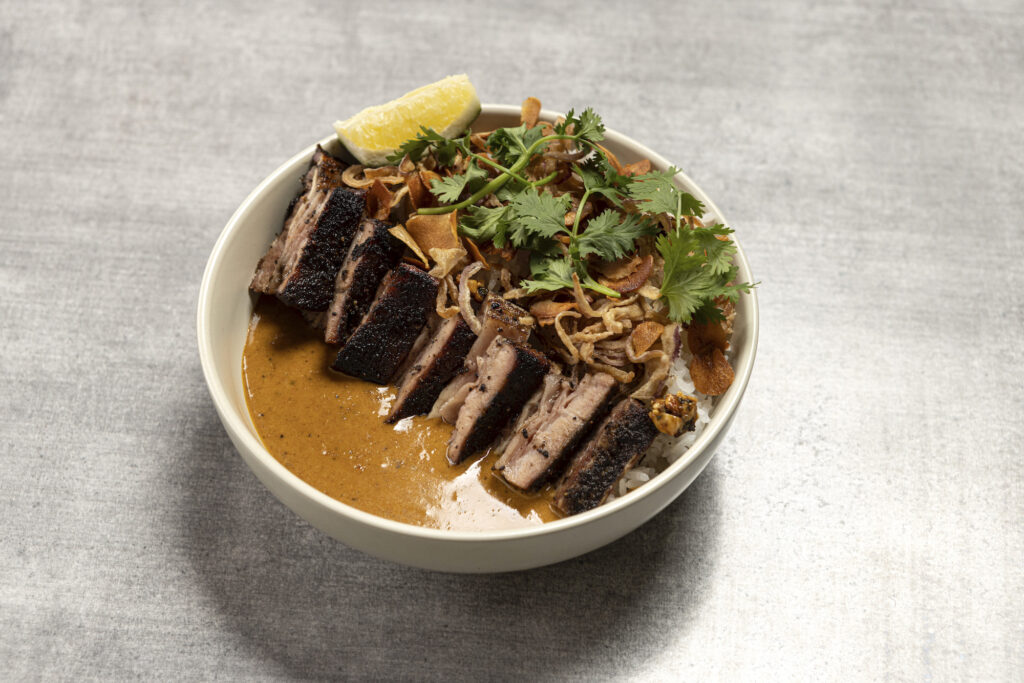

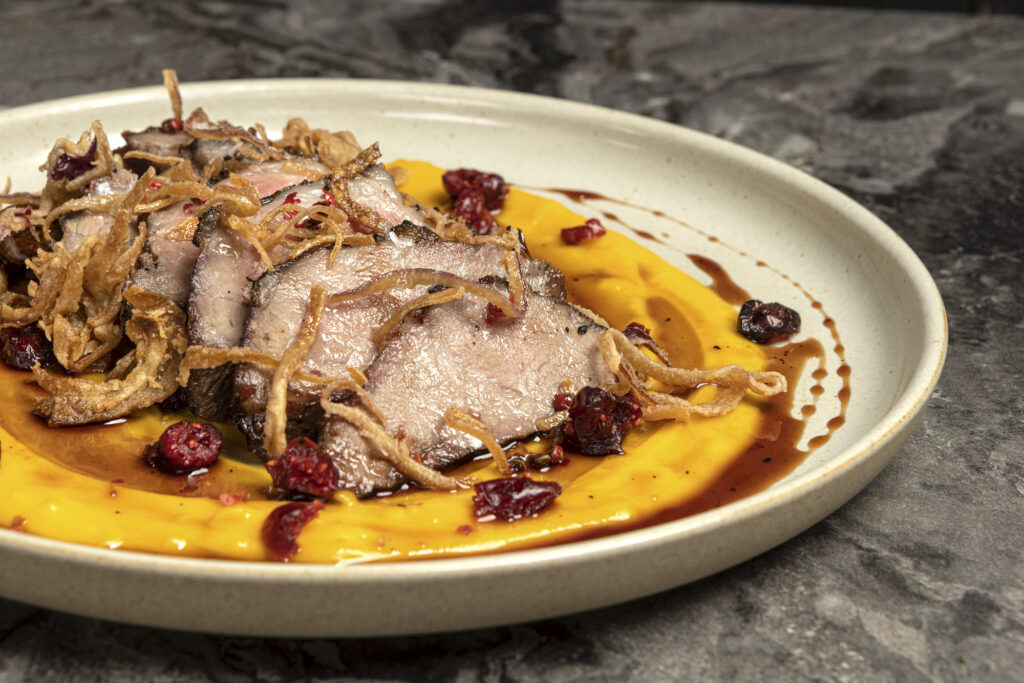
While the grilled pork iberico—aided by a hypnotically radiant sweet potato puree, cranberries, fried onions, and pink peppercorns—entices with theatrics, it achieves bold flavors with each thick slice. And we’re totally here for it.
But it’s not just about the smoked and grilled meats. There are also dishes that cater to the non-meat needs of other customers. The crab pasta with sambal, kaffir lime, and crab fat butter is packed with umami goodness while the always in-demand potato pave (layers of thrice cooked potatoes pressed for 24 hours, bacon foam, and Grana Padano) had everyone on TikTok and Instagram swooning.
“When we collaborate, we just throw ideas to each other about certain cuts of meat,” explains Joseph Galvez. “Most of the time about cuts of meat and then the component of the dish. Then it moves to ‘okay, how do we cook it?’ Then how do we impart the smoke or the concept of the dish? It always starts with either an ingredient or a quarter of meat.”
“We didn’t expect the demand for the potato pave,” says Galvez. “It’s extremely labor-intensive. Like one person can make a maximum of three trays a day and that would be eight orders per tray. So when that started to go viral, we really had to push out more but then of course we only had a limited amount of staff so we had to put a limit on it.”
A beating heart of the sides menu is the cauliflower coleslaw, which, according to Gutierrez, was inspired by a dish from The Pig and Palm in Cebu. “It just threw me off guard. I just thought it was like a simple cauliflower but when we tried it we were all like ‘wow,’ We all felt that it was the best dish that took us by surprise.”

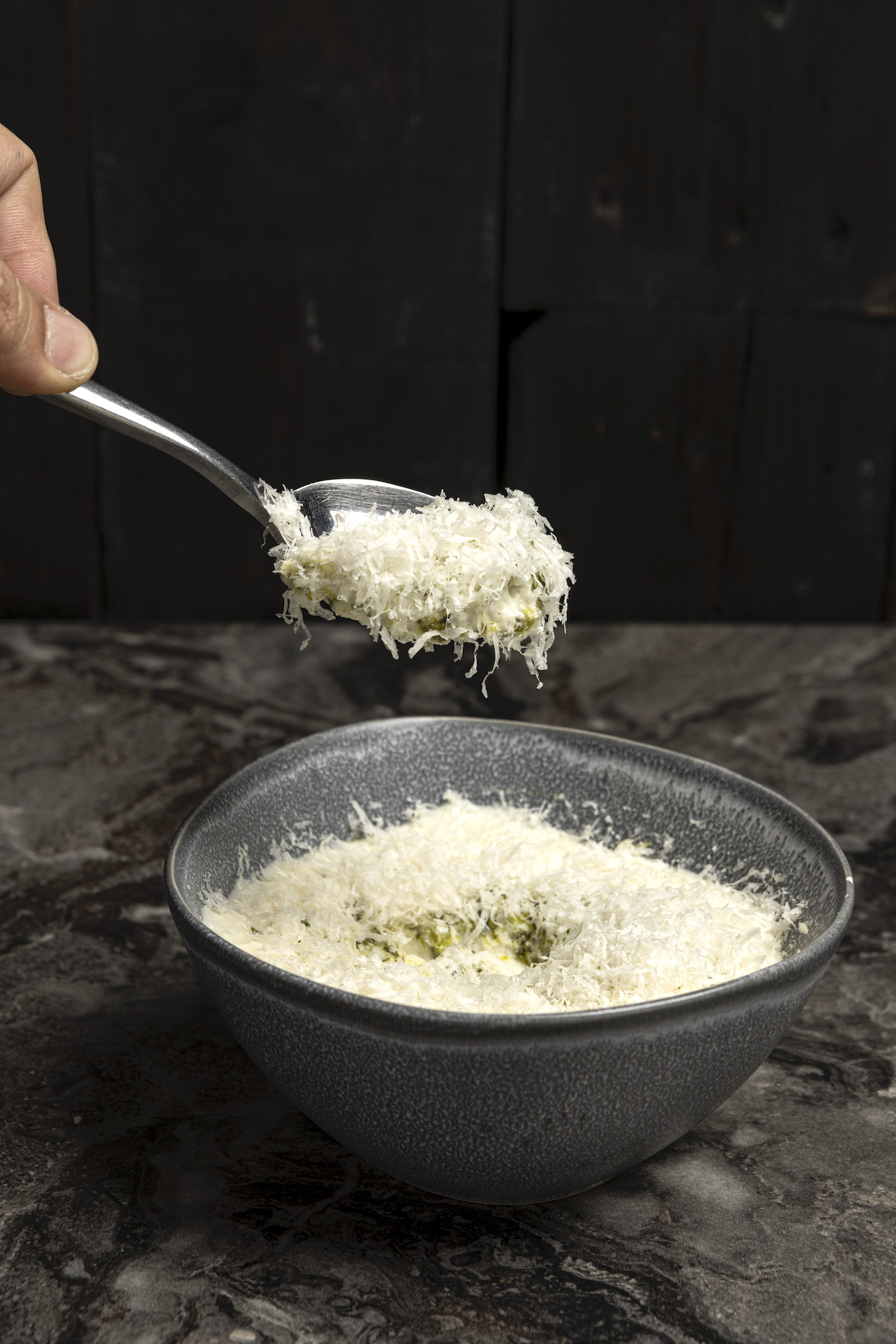
These are all fun explorations of how Burnt Bean sometimes decides to reframe delicious ideas and just ricochets off into various directions. It’s palpable that they know how to please a much more diverse market than the one they previously had in Poblacion.
“People are trying to be healthy, they want to avoid meat sometimes,” shares Acosta. “So now we made it more diverse.”
Navigating the pandemic

Like many other restaurants and establishments, making it out of the pandemic—and coming up with a restaurant that demanded more financially—was no small feat.
“During the pandemic, I closed my restaurant in Quezon City, and then my wife and I actually moved to our farm in Batangas,” says Galvez. “I was trying to learn how to make money on the farm. I got more in touch with crops and ingredients, and learned how to value them. And then I wasn’t actually sure if I was going to go back or open another restaurant until they mentioned Burnt Bean.”
“You have to be resilient,” says Juano Gutierrez about their pandemic experience. “That’s the best advice I can give. You also need to adapt, and you need to adapt fast. You need to learn what the trends are, and you have got to do what you got to do.
“We really had a hard time building Burnt Bean,” reveals Acosta. “The capitalization was massive. And when we approached people they thought the amount of capital we needed was too big for a restaurant. They turned us down.”
The saving grace was people who did actually believe in Acosta and Gutierrez’s concept. “We were able to open this even if we didn’t get the whole capital that we were going to get,” she adds. “We were able to fend the doubt off—you really just have to take the leap.
“You have to be resilient,” says Gutierrez. “That’s the best advice I can give. You also need to adapt, and you need to adapt fast. You need to learn what the trends are, and you have got to do what you got to do. You need to understand your market and know what they want. If you do that, if you have the right, good food, you’re going to do well.”





